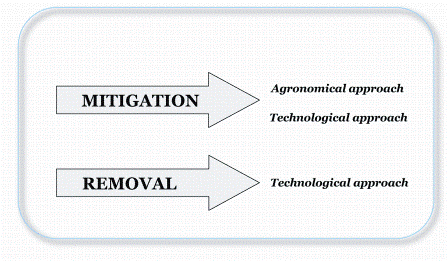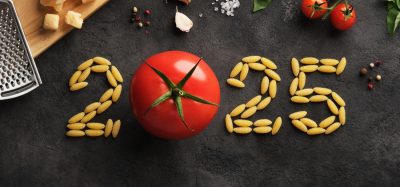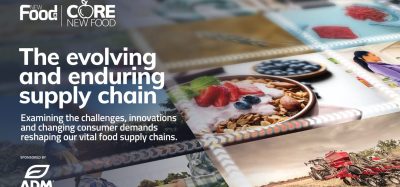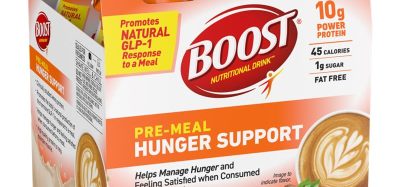Occurrence, toxicology and strategies for reducing acrylamide levels in foods
- Like
- Digg
- Del
- Tumblr
- VKontakte
- Buffer
- Love This
- Odnoklassniki
- Meneame
- Blogger
- Amazon
- Yahoo Mail
- Gmail
- AOL
- Newsvine
- HackerNews
- Evernote
- MySpace
- Mail.ru
- Viadeo
- Line
- Comments
- Yummly
- SMS
- Viber
- Telegram
- Subscribe
- Skype
- Facebook Messenger
- Kakao
- LiveJournal
- Yammer
- Edgar
- Fintel
- Mix
- Instapaper
- Copy Link
Posted: 4 July 2012 | Monica Anese, Department of Food Science, University of Udine | No comments yet
The discovery in 2002 that cooking of various foods at high temperature (exceeding 100°C) results in the formation of high levels of acrylamide1 has caused considerable concern because this compound has been classified as ‘probably carcinogenic to humans’ by the International Agency for Research on Cancer2. In fact, acrylamide levels ranging from a few micrograms to some milligrams per kilogram have been found in many staple foods, such as potato derivatives (potato chips, French fries, etc.), bakery products (bread crust, crisp bread, biscuits, crackers, breakfast cereals, etc.), roasted coffee and cocoa3,4. Maillard-type reactions, i.e. involving the presence of reducing sugars (e.g. glucose and fructose) and the amino acid asparagine, have been shown as one of the major reaction pathways of acrylamide formation5,6.
Since the development of the desired sensory properties (colour, flavour, texture) of heated foods is due to the development of the Maillard reaction products, it is very difficult to minimise acrylamide formation without compromising the food sensory acceptability.
Extensive studies in rodents and other laboratory animals have provided evidence that exposure to acrylamide causes cellular damage in both the nervous and reproductive systems, and produces tumours in certain hormonally responsive tissues2.
The discovery in 2002 that cooking of various foods at high temperature (exceeding 100°C) results in the formation of high levels of acrylamide1 has caused considerable concern because this compound has been classified as ‘probably carcinogenic to humans’ by the International Agency for Research on Cancer2. In fact, acrylamide levels ranging from a few micrograms to some milligrams per kilogram have been found in many staple foods, such as potato derivatives (potato chips, French fries, etc.), bakery products (bread crust, crisp bread, biscuits, crackers, breakfast cereals, etc.), roasted coffee and cocoa3,4. Maillard-type reactions, i.e. involving the presence of reducing sugars (e.g. glucose and fructose) and the amino acid asparagine, have been shown as one of the major reaction pathways of acrylamide formation5,6. Since the development of the desired sensory properties (colour, flavour, texture) of heated foods is due to the development of the Maillard reaction products, it is very difficult to minimise acrylamide formation without compromising the food sensory acceptability. Extensive studies in rodents and other laboratory animals have provided evidence that exposure to acrylamide causes cellular damage in both the nervous and reproductive systems, and produces tumours in certain hormonally responsive tissues2.
The discovery in 2002 that cooking of various foods at high temperature (exceeding 100°C) results in the formation of high levels of acrylamide1 has caused considerable concern because this compound has been classified as ‘probably carcinogenic to humans’ by the International Agency for Research on Cancer2. In fact, acrylamide levels ranging from a few micrograms to some milligrams per kilogram have been found in many staple foods, such as potato derivatives (potato chips, French fries, etc.), bakery products (bread crust, crisp bread, biscuits, crackers, breakfast cereals, etc.), roasted coffee and cocoa3,4. Maillard-type reactions, i.e. involving the presence of reducing sugars (e.g. glucose and fructose) and the amino acid asparagine, have been shown as one of the major reaction pathways of acrylamide formation5,6.
Since the development of the desired sensory properties (colour, flavour, texture) of heated foods is due to the development of the Maillard reaction products, it is very difficult to minimise acrylamide formation without compromising the food sensory acceptability.
Extensive studies in rodents and other laboratory animals have provided evidence that exposure to acrylamide causes cellular damage in both the nervous and reproductive systems, and produces tumours in certain hormonally responsive tissues2. In addition, animal experiments have demonstrated that acrylamide is responsible for cumulative neurotoxicity7. That means that individuals exposed to the same level of acrylamide with different lengths of exposure would present the same neurological effects. These findings are particularly relevant for younger people, because the ratio between daily intake and body weight is less favourable for these consumers. Whereas some epidemiological studies indicate there may be association between dietary exposure to acrylamide and some types of cancer, to date the total of the epidemiological evidence is not consistent. Nevertheless, acrylamide is still considered potentially carcinogenic for humans. Worldwide efforts, including extensive research programs, have been established since 2002 to elucidate acrylamide properties, methods of analyses, mechanisms of formation, risks for consumers as well as technological strategies to reduce its formation. As of 2012, research results have been published in approximately 850 papers. In addition, Food and Drink Europe8 has developed a ‘toolbox’ containing information on acrylamide mitigation strategies to be acquired by industrial operators. In January 2011, the European Commission published a recommendation regarding the acrylamide limits in several food categories9. Member States are recommended to carry out investigations into the production and processing methods used by food producers in cases where the level of acrylamide exceeds the prescribed acryla – mide indicative values.
Technological strategies to reduce acrylamide levels in foods
According to the huge number of papers dealing with the ways to reduce acrylamide concentration in foods, two conceptually different general technological strategies can be identified (Figure 1): the former is relevant to mitigation strategies, aimed to prevent acrylamide formation during the heating process; the latter is referred to as removal intervention, aimed to move away the already formed acrylamide from the finished product. Most published papers deal with acrylamide mitigation strategies. These can be regarded both as agronomical and technological approaches. The former include selection of crop varieties with low reducing sugars and/or asparagine as well as post-harvesting inter – ventions and control of storage conditions10.
Technological strategies based on physical approach
The physical approaches to minimise the content of the toxic molecule in foods include reduction of the thermal impact, acrylamide removal by means of low pressure treatments, its transformation or decomposition by promoting monomer polymerisation or degradation throughout radiation.
As acrylamide formation is dramatically influenced by the heating temperature and time as well as by the modality of heat transfer during processing11, the key factor controlling acrylamide formation is represented by the choice of process parameters leading to the generation of a moderate thermal input. This can be achieved in different ways, for instance by applying prolonged heating at lower temperatures, or higher temperatures at the early stages of heating, when the moisture content is high, followed by lower temperatures in the final stages, when the water content is reduced12,13. Also, keeping the relative humidity high during baking proved to be effective in reducing acrylamide levels in bakery products14. In fact, as long as the water evaporates (the temperature does not exceed 100°C) no acrylamide is detected in the food. On the contrary, the lower the moisture in the product, the more acrylamide is formed at a given temperature11.
A reduction of the process temperature can be also achieved by vacuum frying15. Compared to traditional frying at atmospheric pressure and 150 to 180°C, vacuum frying at 1.33 kPa and 118°C reduced acrylamide concentration in potato chips by up to 94 per cent, without causing significant changes in colour and texture attributes.
A reduction of the overall thermal effect and consequently a lower amount of acrylamide in bakery products can be achieved by combining conventional and radiofrequency heating16. Food coming from a conventional (aircirculating) oven with fairly high moisture content (around 10 per cent) is moved to a radiofrequency heater that allows the residual moisture to be rapidly and uniformly evaporated. In this way, it is possible to obtain products with acrylamide concentrations up to 50 per cent lower than the corresponding products baked by conventional heating only. Moreover, microwave frying of potato strips and battered and breaded chicken was effective in reducing acrylamide formation in comparison with conventionally deep fried samples due to shorter frying times17,18. However, lighter coloured samples were obtained.
Instead of preventing its formation, acrylamide can be removed, transformed or degraded. Acrylamide can be removed from a finished food product as vapour by exploiting its physical and chemical properties19,20. Depending on the food product, significant acrylamide removal was achieved only in foods previously hydrated at high water activity values. Although preliminary sensory trials showed that vacuum treatments carried out for short lengths of time only slightly affected the product sensory properties, flavour loss could represent a limiting factor for the industrial exploitation of this technology.
Acrylamide can polymerise upon light radiation to form polyacrylamide which is not toxic and carcinogenic19. However, ionising radiation is very effective in destroying acrylamide in water, but has a very limited effect in foods such as oil and potato chips21. Besides the limited effectiveness of this strategy, other factors may hurdle the use of ionising irradiation as a mitigating strategy, such as nutrient loss, off-odour compound formation and regulatory compliance.
Technological strategies based on a chemical approach
These strategies are relevant to the use of chemicals or ingredients to mitigate acrylamide formation. They include both soaking or blanching pre-treatments in additive solutions or formulation changes, consisting in the addition of acrylamide-inhibiting ingredients.
Organic acids (citric, acetic, L-lactic acid), free amino acids and protein-based ingredients, as well as calcium and sodium ions resulted to effectively reduce acrylamide formation in the final product, by acting through different mechanisms. It is worth noting that, although quite effective22-28, these ingredients may produce undesired effects, negatively influ – encing the products’ acceptability. For instance, organic acids may be responsible for sour taste, sulphur containing amino acids may produce undesired off-flavours during heating, monoand divalent cations, such as Na+ and Ca2+, may be responsible for the failure of the dough to rise as well as for a bitter aftertaste and the substitution of ammonium carbonate or bicarbonate with the corresponding sodium salt leads to finished products often unacceptable for consumption.
To overcome the above mentioned negative effects on the food sensory quality, a combination of treatments can be used. For instance, the combined use of glycine or soy protein hydrolysate with citric acid not only had an additive effect in acrylamide reduction but also a better flavour profile was achieved than by applying the treatments individually29,30. Furthermore, sensory analysis of potato crisps blanched in water enriched with a combination of several additives, such acetic acid and glycine or L-lysine, showed that a minimisation of acrylamide formation was possible while maintaining the expected product quality for the consumer31.
Technological strategies based on a biotechnological approach
As already pointed out, the limits of most of the above mentioned treatments are reduced development of desired colour and flavour or negative impact of additives on taste and appearance. Biotechnological tools seem to overcome these aspects as, while minimising acrylamide formation, they showed limited impact on the sensory properties of the final product. At present, the biotechnological approaches for acrylamide reduction are represented by fermentation, operated by yeast or lactic acid bacteria, and pre-treatments by means of the enzyme asparaginase. Depending on the food type and composition as well as on microbial strain, fermentation allows extensive acrylamide reduction to be achieved (up to 80 per cent)27,28,32-34. Even greater acrylamide reduction (up to 94 per cent) can be obtained by combining the fermentation process with physical (blanching) or chemical (amino acid addition) interventions33,34.
Asparaginase pre-treatment of raw potatoes and dough has been claimed to reduce effectively acrylamide levels without altering the appearance or taste of the final product35. Commercial enzymes based on cloning of Aspergillus oryzae and Aspergillus niger have received the generally recognised as safe status from the US FDA. Studies have shown that asparaginase effectiveness is influenced by many variables, such as enzyme dose, reaction time, water content of the reaction environment, temperature and pH at which the reaction occurs, enzyme-substrate contact23,36-38 as well as the different processing conditions and the presence of other recipe components39. Therefore, the optimal conditions for aspara – ginase activity and acrylamide mitigation have to be evaluated on recipe-by-recipe basis.
Conclusions
A huge number of interventions for minimising acrylamide levels in food have been suggested. Their efficacy depends on different variables, such as food type, ingredients, interactions among food components or ingredients and process conditions. Therefore, a same inter – vention could exhibit different inhibitory effects on acrylamide formation depending on the above mentioned variables (Figure 2, page 14). Moreover, to find practical application these interventions should satisfy process prerequisites such as feasibility and compatibility with the existing industrial process, low impact on the sensory and nutritional properties of food, regulatory compliance and low cost.
References
1. Tareke, E., Rydberg, G., Karlsson, P., Eriksson, S., Törnqvist, M. 2002. Acrylamide: a cooking carcinogen? J. Agric. Food Chem. 50: 4998-5006
2. IARC. 1994. IARC Monographs on the Evaluation of Carcinogenic Risks to Humans. Vol 60. International Agency for Research on Cancer, Lyon, France
3. IRMM. 2005. EU Database on acrylamide levels in food. www.irmm.jrc.be/htlm/acrivities/acrylamide /database.htm (accessed August 31, 2009).
4. FDA, Center for Food Safety and Applied Nutrition 2006. http://www.cfsan.fda.gov/~lrd/pestadd.html #acrylamide (accessed August 31, 2009)
5. Stadler RH, Blank I, Varga N et al (2002) Acrylamide from Maillard reaction products. Nature 419:449
6. Mottram DS, Wedzicha BL, Dodson AT (2002) Acrylamide is formed in the Maillard reaction. Nature 419:448
7. LoPachin, R.M., Ross, J.F., Lehning, E.J. 2002. Nerve terminals as the primary site of acrylamide action. NeuroToxicol. 23: 43-59
8. Food Drink Europe 2011. Food Drink Europe Acrylamide Toolbox. http://www.fooddrinkeurope.eu/ publications/category/toolkits
9. EC, European Commission Recommendation of 10.1.2011 on investigations into the levels of acrylamide in food. http://ec.europa.eu/food/ food/chemicalsafety/contaminants/recommendation _10012011_acrylamide_food_en.pdf
10. Muttucumaru, N., Elmore, J.S., Curtis, T., Mottram, D.S., Parry, M.A.J., Halford, N.G. 2008. Reducing acrylamide precursors in raw materials derived from wheat and potato. J. Agric. Food Chem. 56: 6167-6172
11. Taeymans, D., Wood. J., Ashby, P. et al. 2004. A review of acrylamide: an industry perspective on research, analysis, formation and control. Crit. Rev. Food Sci. Nutr. 44:323-347
12. Haase, N.U., Matthaus, B., Vosmann, K. 2003. Acrylamide formation in foodstuffs – minimizing strategies for potato crisps. Deutsche Lebensm. Rund. 99:87-90
13. Biedermann, M., Grob, K. 2003. Model studies on acrylamide formation in potato, wheat flour and corn starch; ways to reduce acrylamide content in bakery ware. Mitt. Lebensm. Hyg. 94:406-422
14. Ahrné, L., Andersson, C-G., Floberg, P. Rosén, J., Lingnert, H. 2007. Effect of crust temperature and water content on acrylamide formation during baking of white bread: steam and falling temperature baking. Lebensm. Wiss. Technol. 40: 1708-1715
15. Granda, C., Moreira, R.G., Tichy, S.E. 2004. Reduction of acrylamide formation in potato chips by lowtemperature vacuum frying. J. Food Sci. 69:E405-E411
16. Anese, M., Sovrano, S., Bortolomeazzi, R. 2008. Effect of radiofrequency heating on acrylamide formation in bakery products. Eur. Food Res. Technol. 226:1197-1203
17. Sahin, S., Sumnu, G., Oztop .H. 2007. Effect of osmotic pretreatment and microwave frying on acrylamide formation in potato strips. J. Sci. Food Agric. 87:2830-283628
18. Barutcu, I., Sahin, S., Sumnu, G. 2009. Acrylamide formation in different batter formulations during microwave frying. Lebensm. Wiss. u. Technol. 42:17-22
19. Zhaoyang, L. 2003. Process and apparatus for reducing residual level of acrylamide in heat processed food. Patent No US2003/0219518 A1
20. Anese, M., Suman, M., Nicoli, M.C. 2010. Acrylamide removal from heated foods. Food Chem., 119, 791-794
21. Fan, X., & Mastovska, K. (2006). Effectiveness of ionizing radiation in reducing furan and acrylamide levels in foods. J. Agric. Food Chem., 54, 8266-8270
22. Rydberg, P., Eriksson, S., Tareke, E., Karlsson, P., Ehrenberg, L., Törnqvist, M. 2003. Investigations of factors that influence the acrylamide content of heated foodstuffs. J. Agric. Food Chem. 51:7012-7018
23. Bråthen, E., Kita, A., Knutsen, S.H., Wicklund, T. 2005. Addition of glycine reduces the content of acrylamide in cereal and potato products. J. Agric. Chem. 53:3259-3264
24. Graf, M., Amrein, T.M., Graf, S., Szalay, R., Escher, F., Amadò, R. 2006. Reducing the acrylamide content of a semi-finished biscuit on industrial scale. Lebensm. Wiss. Technol. 39:724-728
25. Gökmen, V., Şenyuva, H.Z. 2007. Acrylamide formation is prevented by divalent cations during the Maillard reaction. Food Chem. 103:196-203
26. Kolek, E., Simko, P., Simon, P. 2006. Inhibition of acrylamide formation in asparagine/D-glucose model systems by NaCl addition. Eur. Food Res. Technol. 224:283-284
27. Sadd, P., Hamlet, C.G., Liang, L. 2008. Effectiveness of methods for reducing acrylamide in bakery products. J. Agric. Food Chem. 56:6154-6161
28. Claus, A., Mongili, M., Weisz, G., Schieber, A., Carle, R. 2008b. Impact of formulation and technological factors on the acrylamide content of wheat bread and bread rolls. J. Cereal Sci. 7:546-554
29. Cook, D.J., Taylor, A. J. 2005. On-line Ms/MS monitoring of acrylamide generation in potato- and cereal-based systems. J. Agric. Food Chem. 53:8926-8933
30. Low, M.Y., Koutsidis, G., Parker, J.K. Elmore, J.S., Dodson, A.T., Mottram, D.S. 2006. Effect of citric acid and glycine addition on acrylamide and flavour in a potato model system. J. Agric. Food Chem. 54:5976-5983
31. Mestdagh, F., De Wilde, T., Delporte, K., Van Peteghem, C., De Meulenaer, B. 2008. Impact of chemical pretreatments on the acrylamide formation and sensorial quality of potato crisps. Food Chem. 106:914-922
32. Fredriksson, H., Tallving, J., Rosen, J. Aman, P. 2004. Fermentation reduces free asparagine in dough and acrylamide content in bread. Cereal Chem. 81: 650-653
33. Baardseth, P., Blom, H., Skrede, G.,Mydland, L.T., Skrede, A., Slinde, E. 2006. Lactic acid fermentation reduces acrylamide formation and other Maillard reactions in French fries. J. Food Sci. 71:C28-C33
34. Anese, M., Bortolomeazzi, R., Manzocco, L., Manzano, M., Giusto, C. 2009d. Effect of chemical and biological dipping on acrylamide formation and sensory properties in deep-fried potatoes. Food Res. Int. 42:142-147
35. Zyzak, D.V., Sanders, R.A., Stojanovic, M. et al. 2003. Acrylamide formation mechanism in heated foods. J. Agric. Food Chem. 51 (16):4782-4787
36. Ciesarová, Z., Kiss, E., Boegl, P. 2006. Impact of L-asparaginase on acrylamide content in potato products. J. Food Nutr. Res. 45: 141-146
37. Pedreschi, F., Kaack, K., Granby, K. 2008. The effect of asparaginase on acrylamide formation in French fries. Food Chem. 109: 386-392
38. Hendriksen, H. V., Kornbrust, B.A., Østergaard, P.R., Stringer, M.A. 2009. Evaluating the potential for enzymatic acrylamide mitigation in a range of food products using an asparaginase from Aspergillus oryzae. J. Agric. Food Chem. 57: 4168-4176
39. Anese M., Quarta B., Peloux L., Calligaris S. 2011 Effect of formulation on the capacity of L-asparaginase to minimize acrylamide formation in short dough biscuits. Food Res. Int., 44, 2837-3842
About the author
Monica Anese is an associate professor of Food Technology at the University of Udine. She is co-author of over 70 articles in national and international journals, proceedings papers and book chapters in the field of food processing and preservation. Her research activity is relevant to stability and safety aspects of food products. In particular, Monica has extensive experience in studying (a) the effects of compositional and processing parameters on the development of the Maillard reaction, as well as on the antioxidant properties of its products; (b) the influence of processing operations on the antioxidant properties of fruit and vegetables; (c) the effect of technological processes on the formation of heat-induced toxic compounds such as acrylamide and furans; (d) the influence of innovative technologies on some technological properties of foods. She holds an Italian patent on the physical removal of acrylamide from finished food products. Since 2011, she has represented the University of Udine at the ISEKI Food project, which is aimed to create a European higher education area in the field of food studies. Monica is the coordinator of a number of research projects financially supported by industrial partners on food stability and safety.










